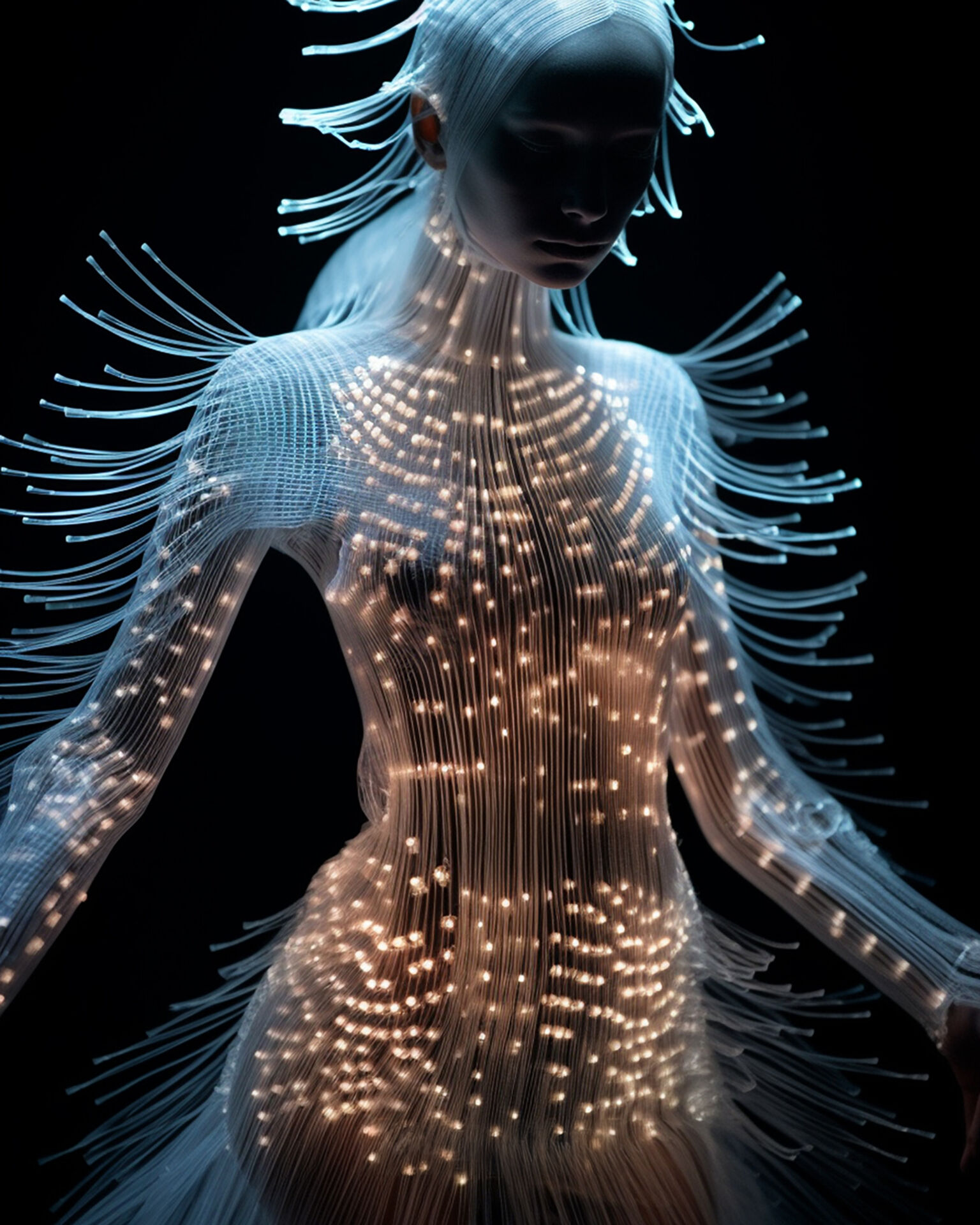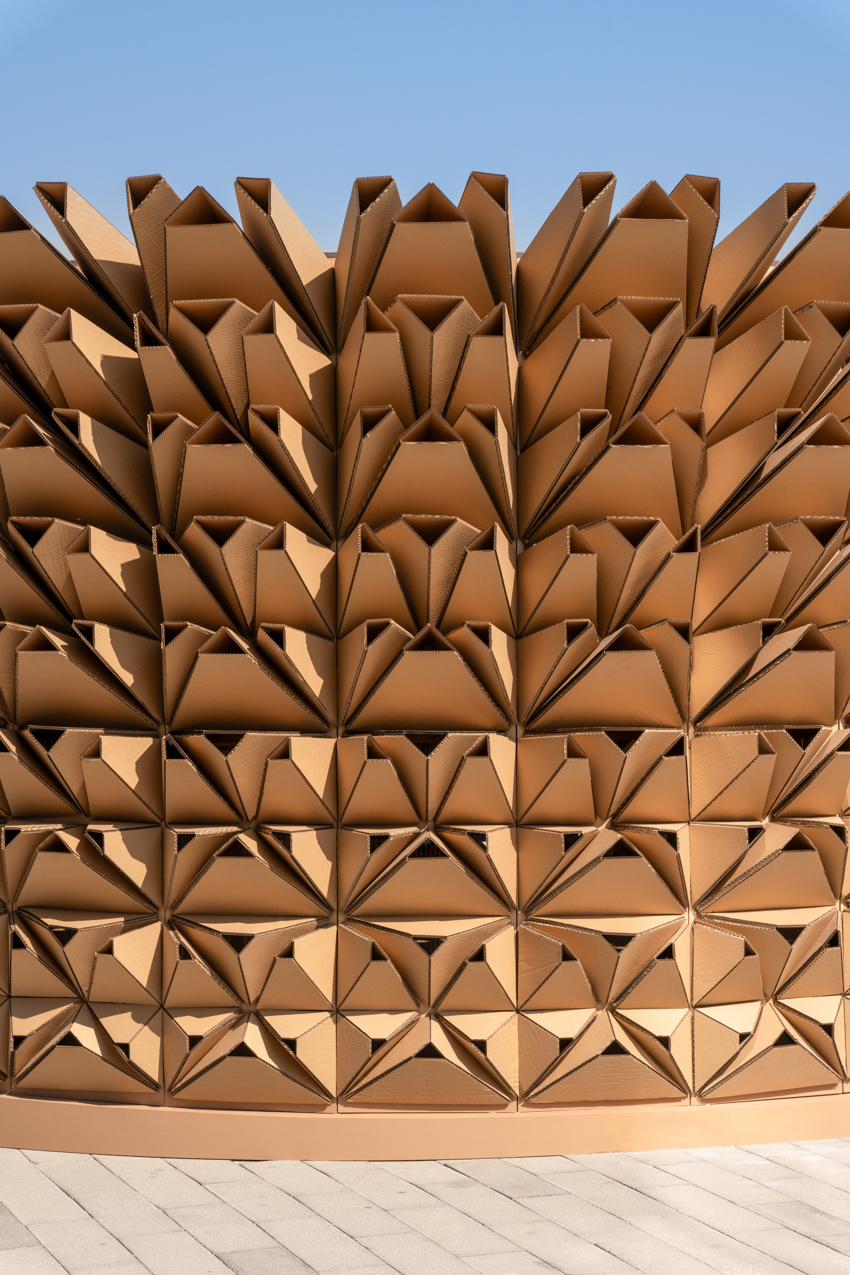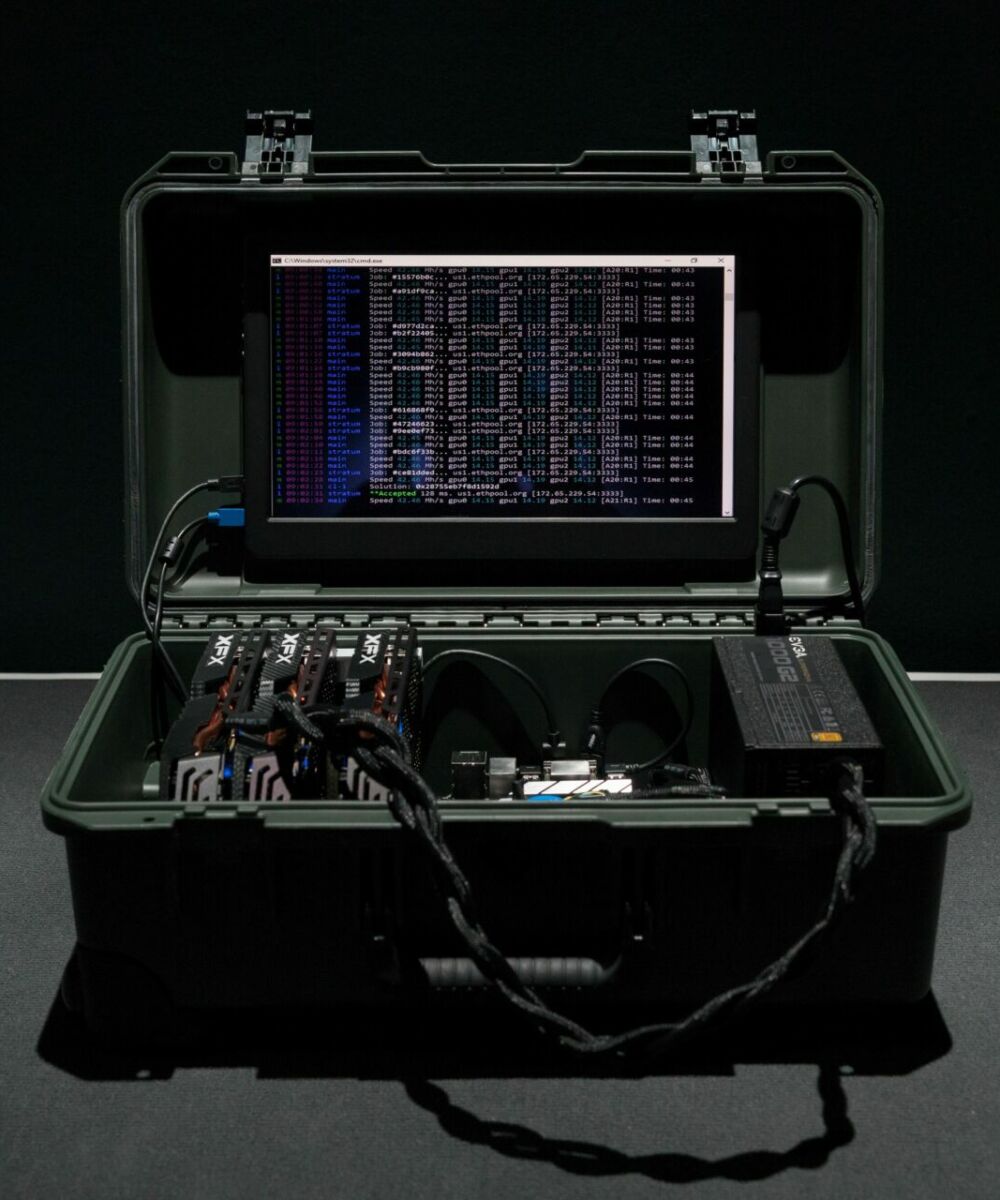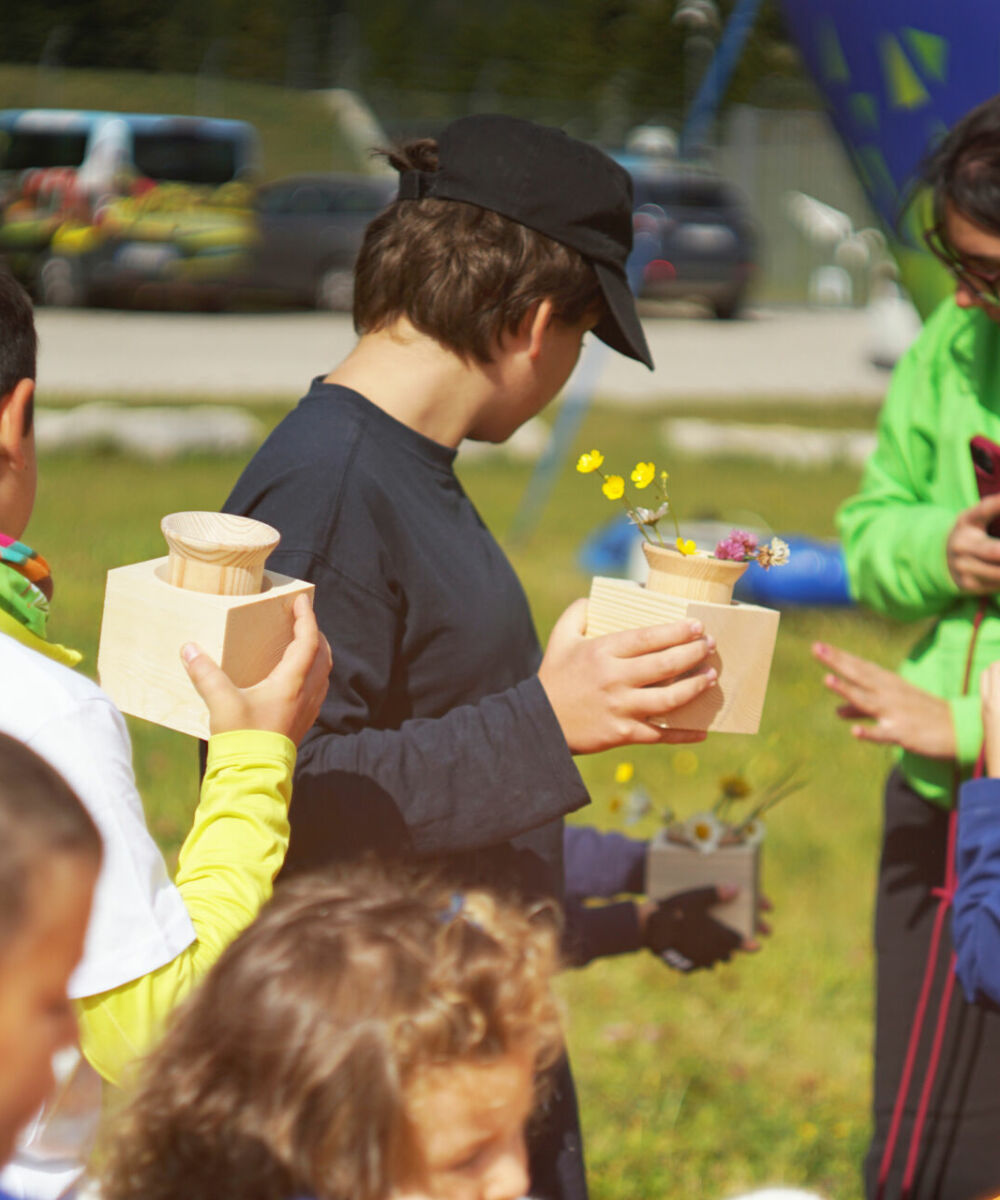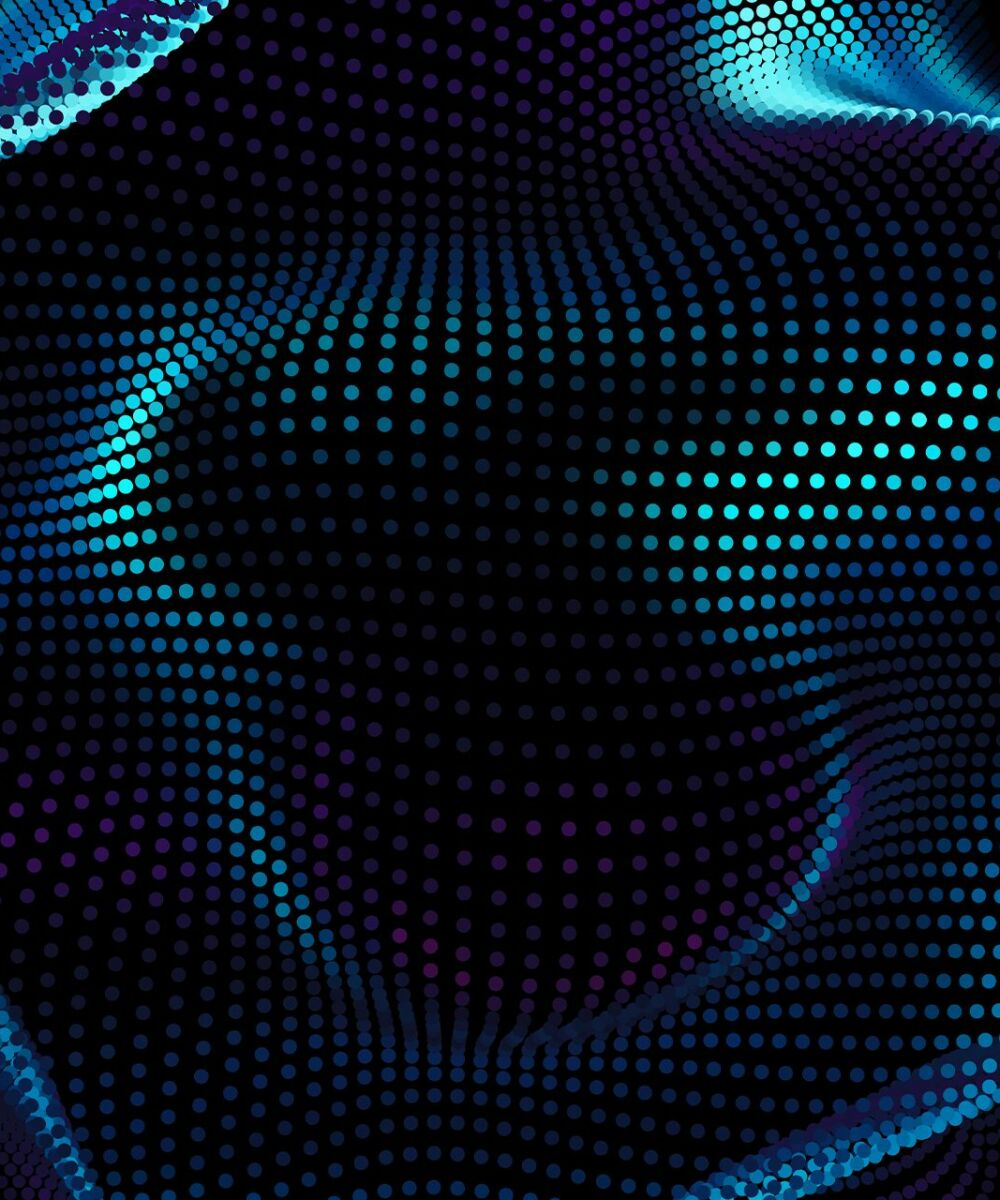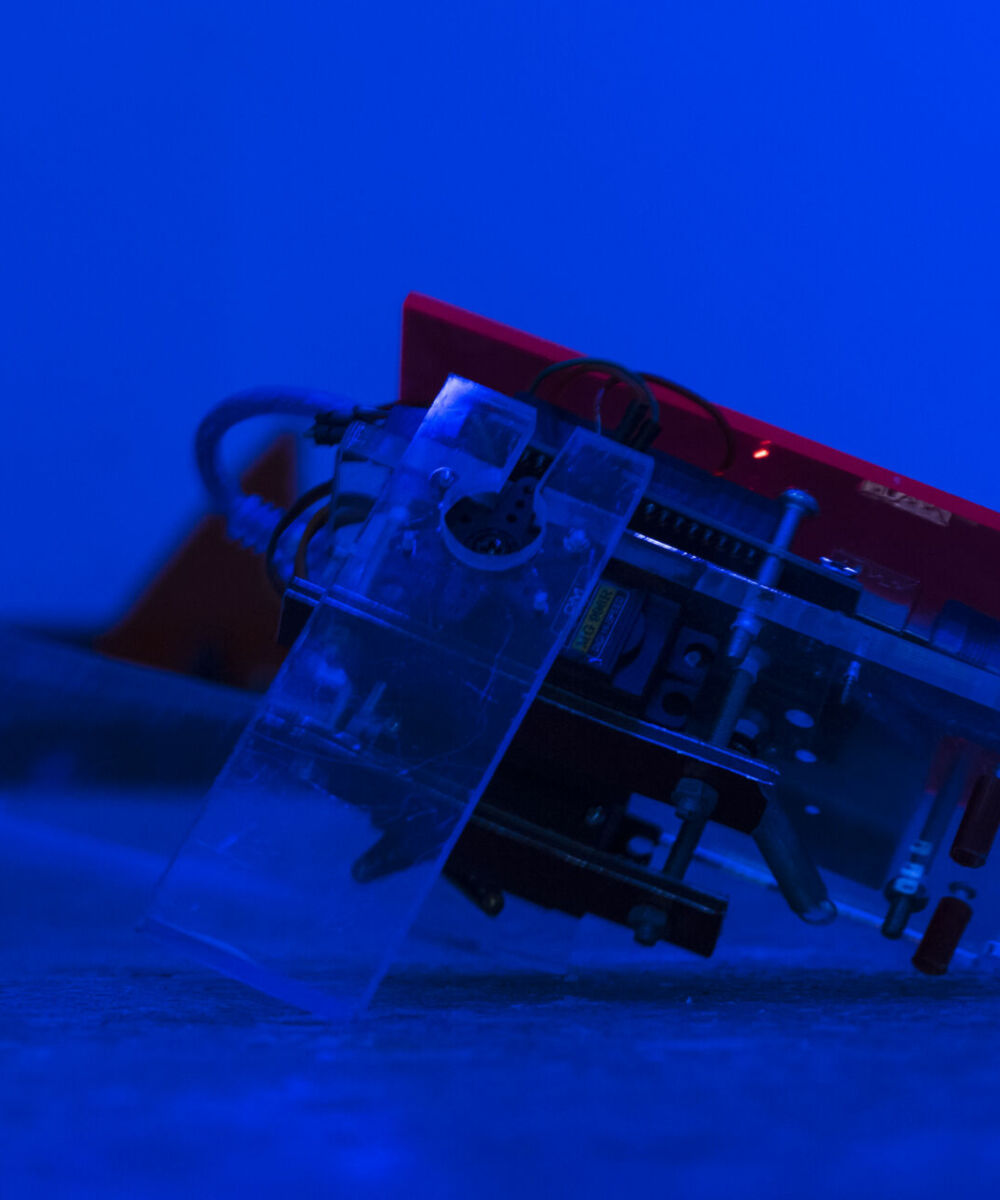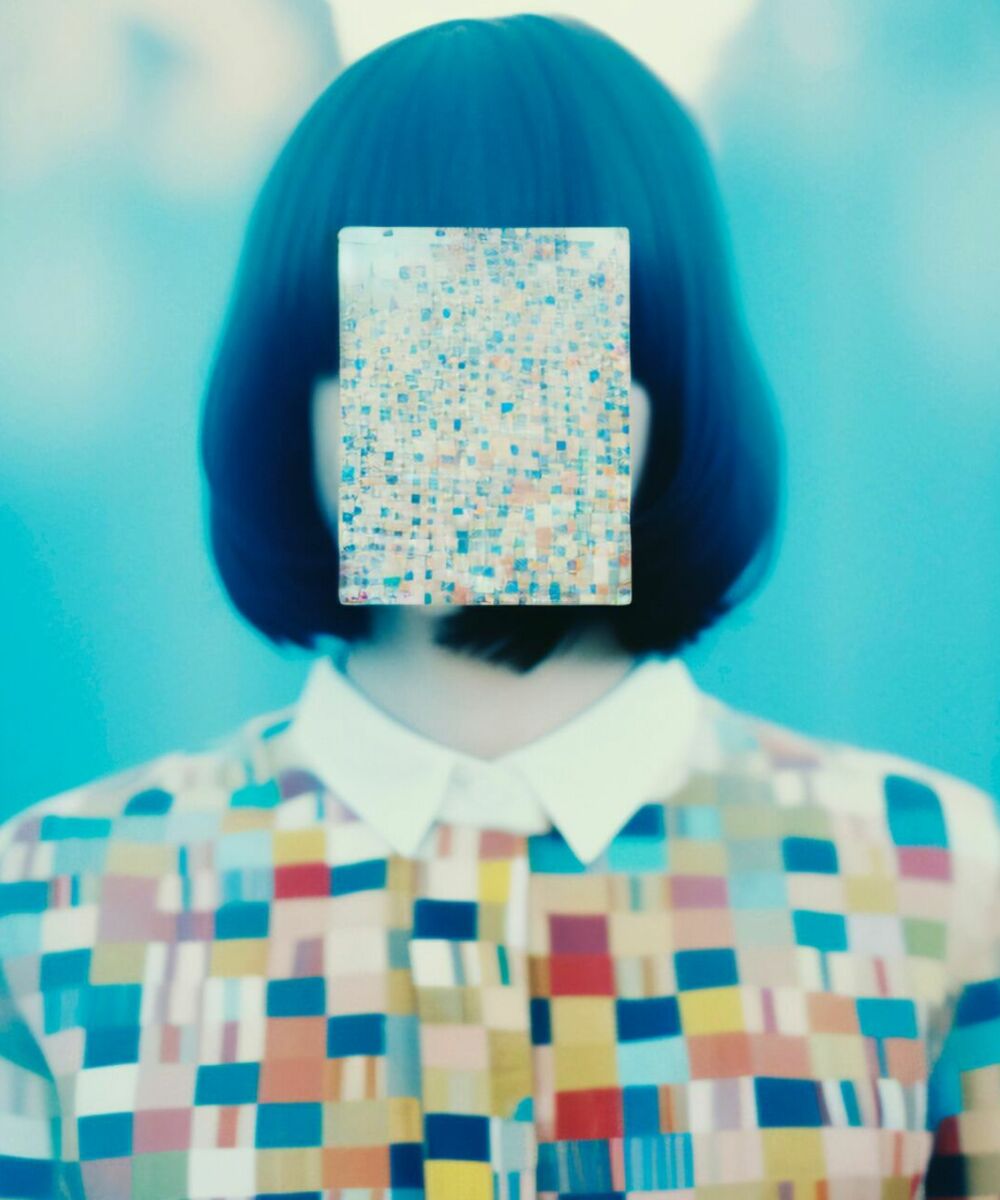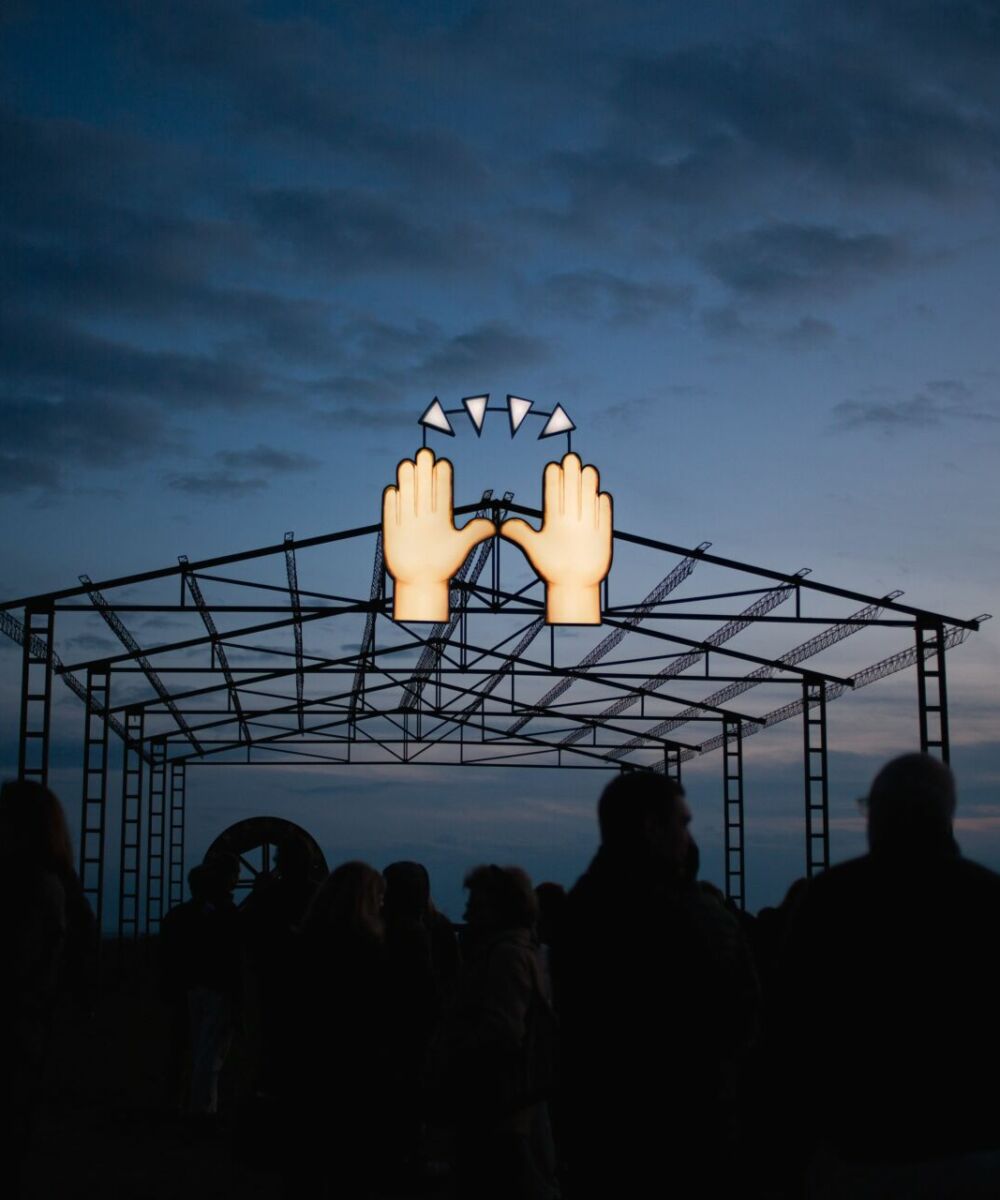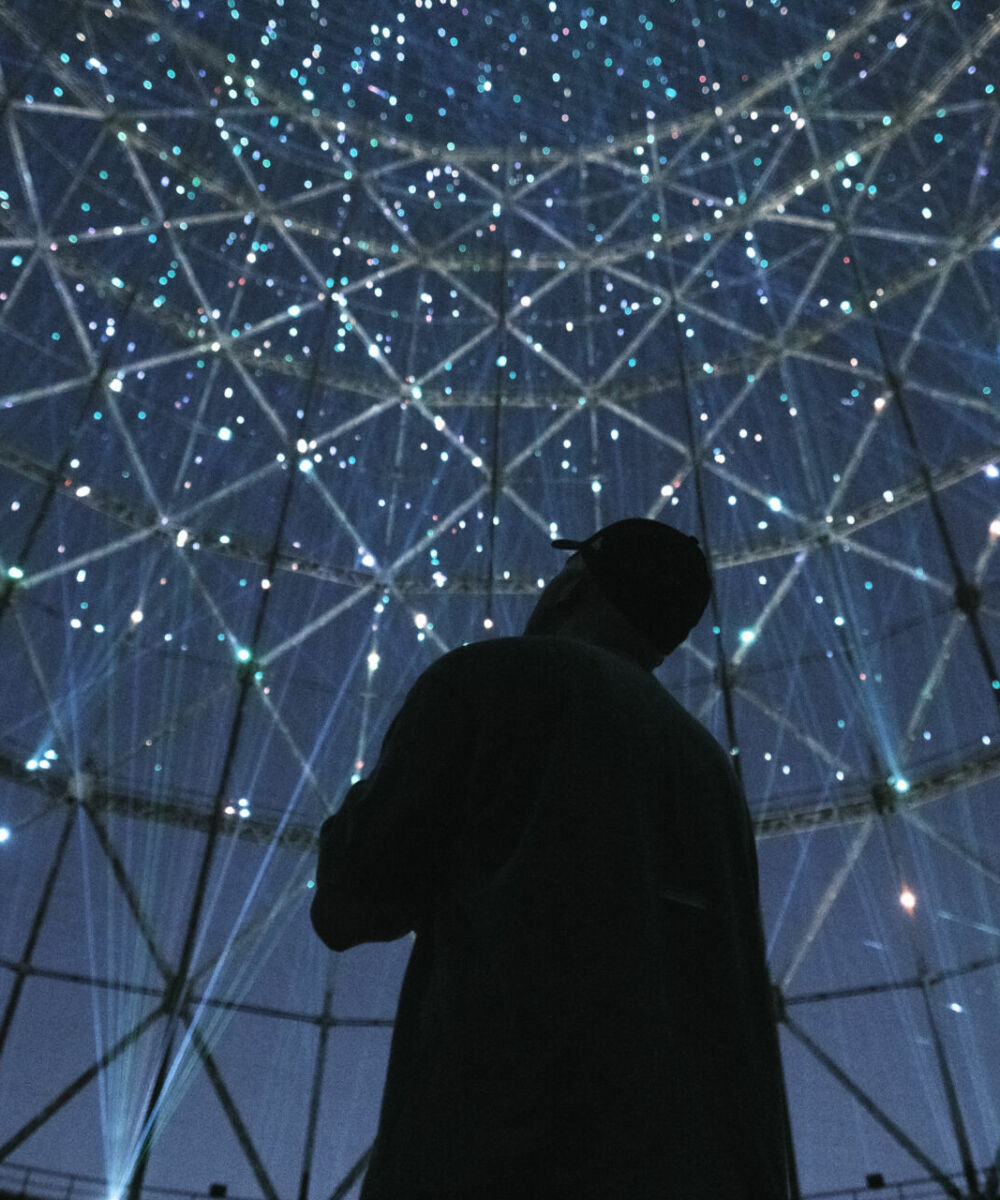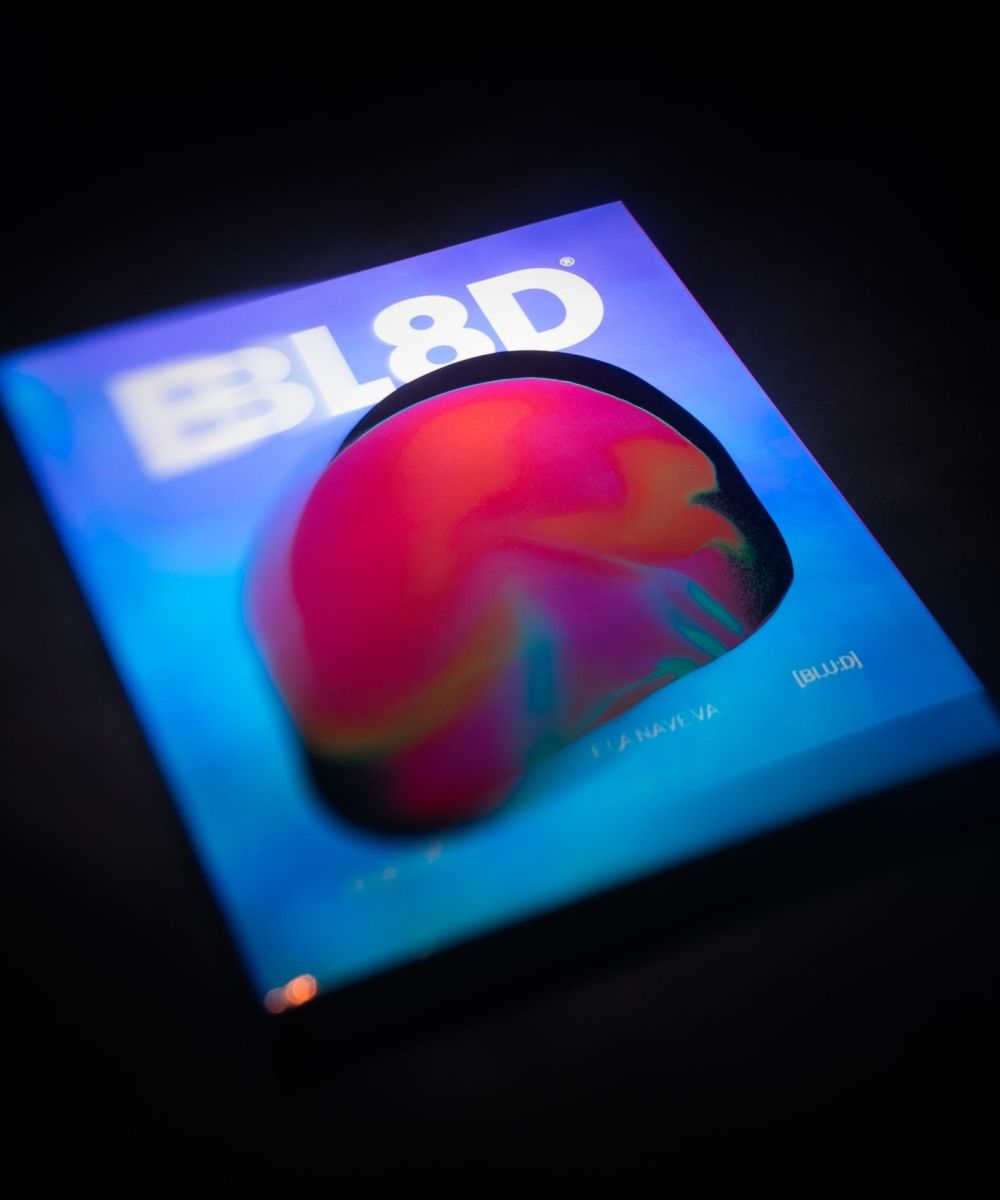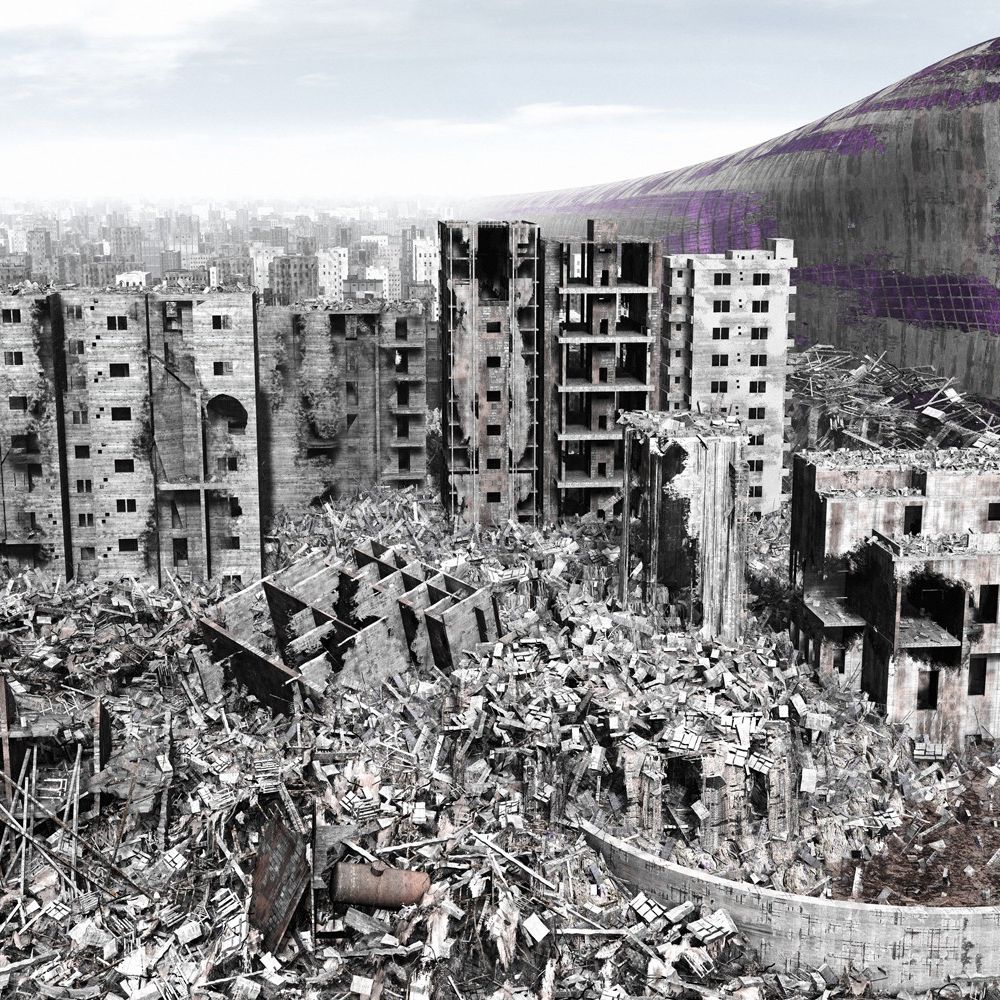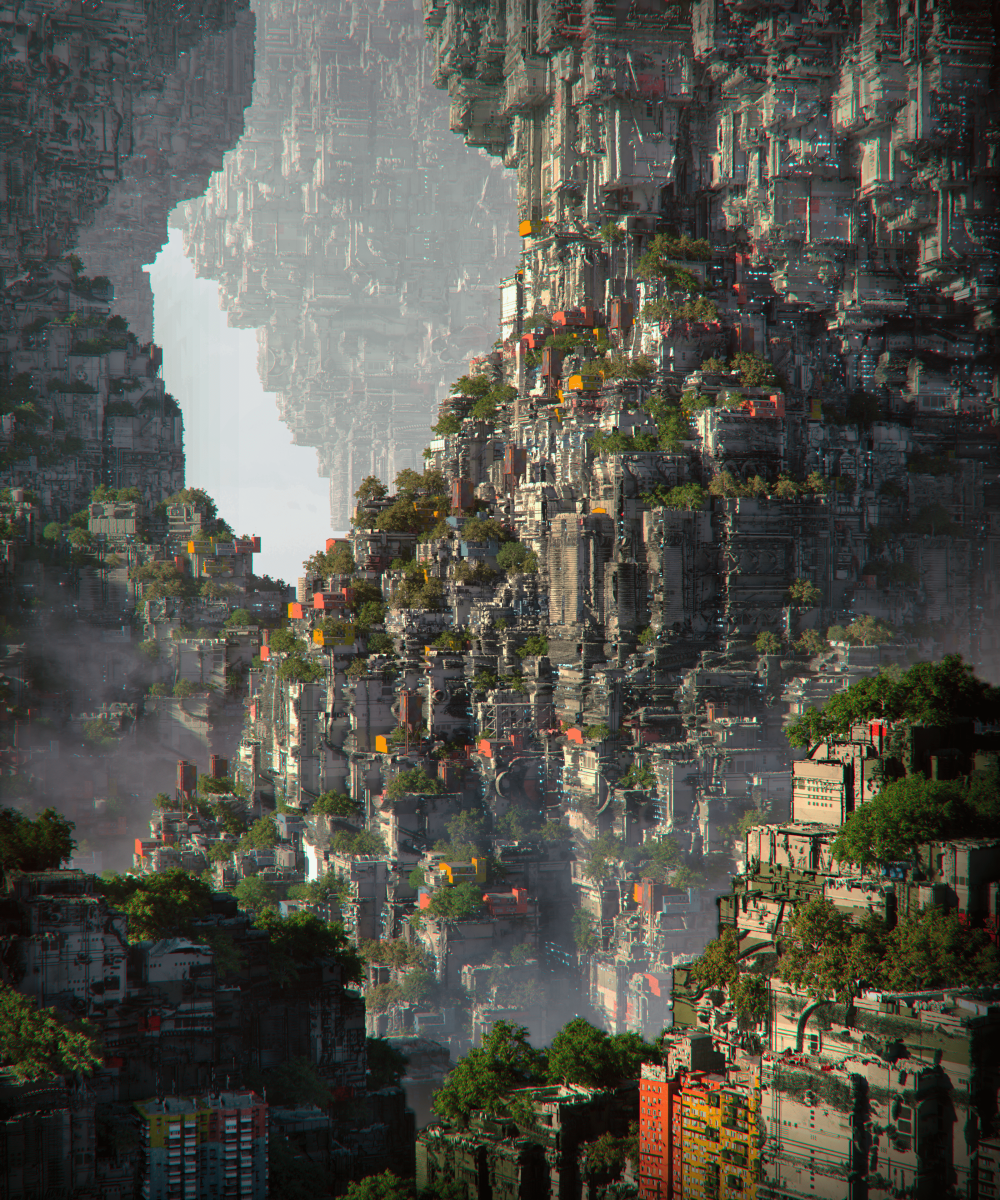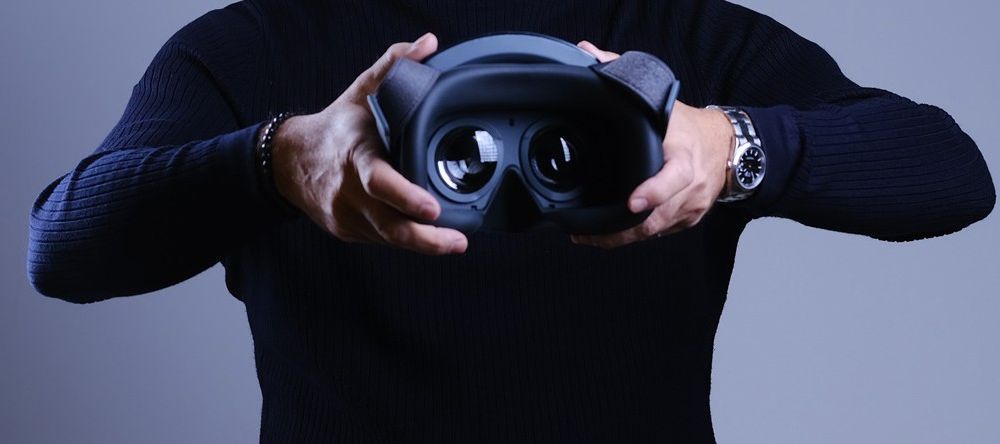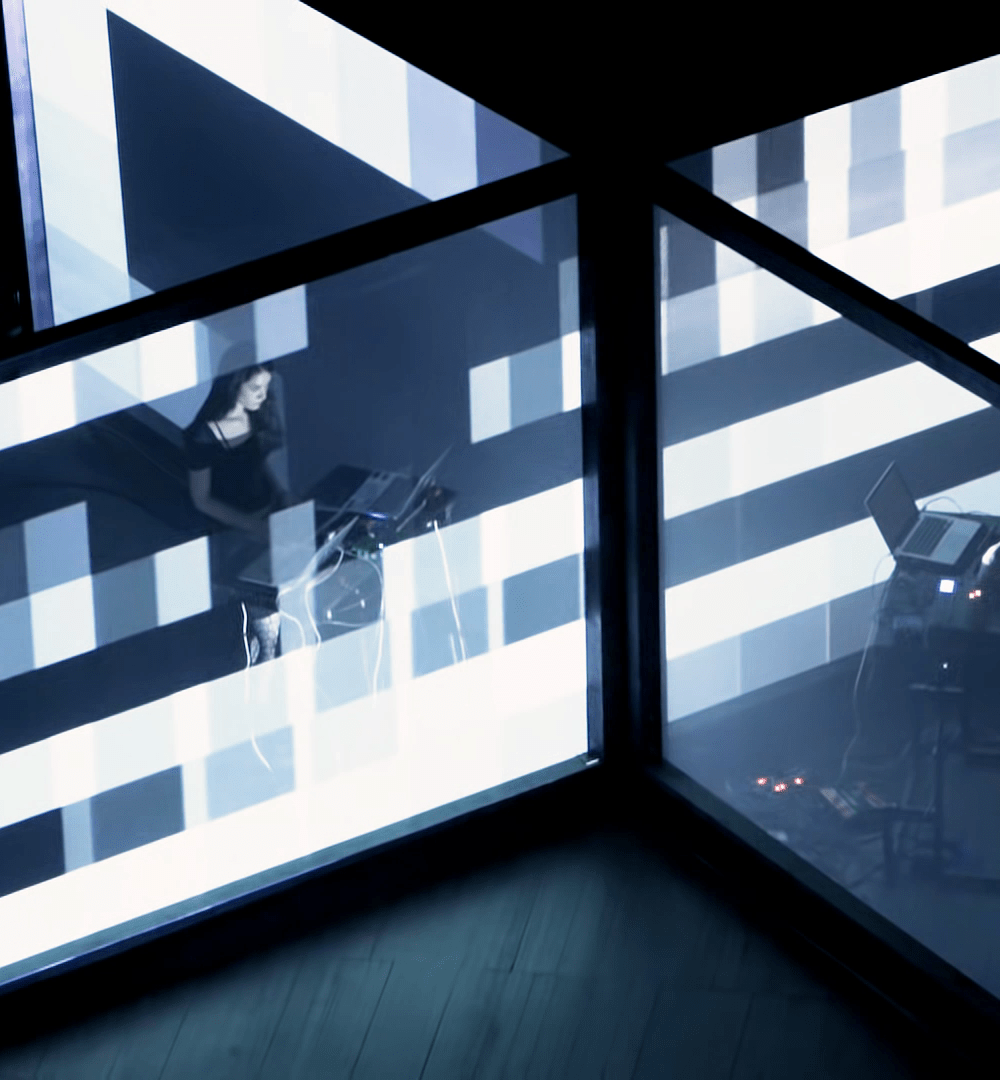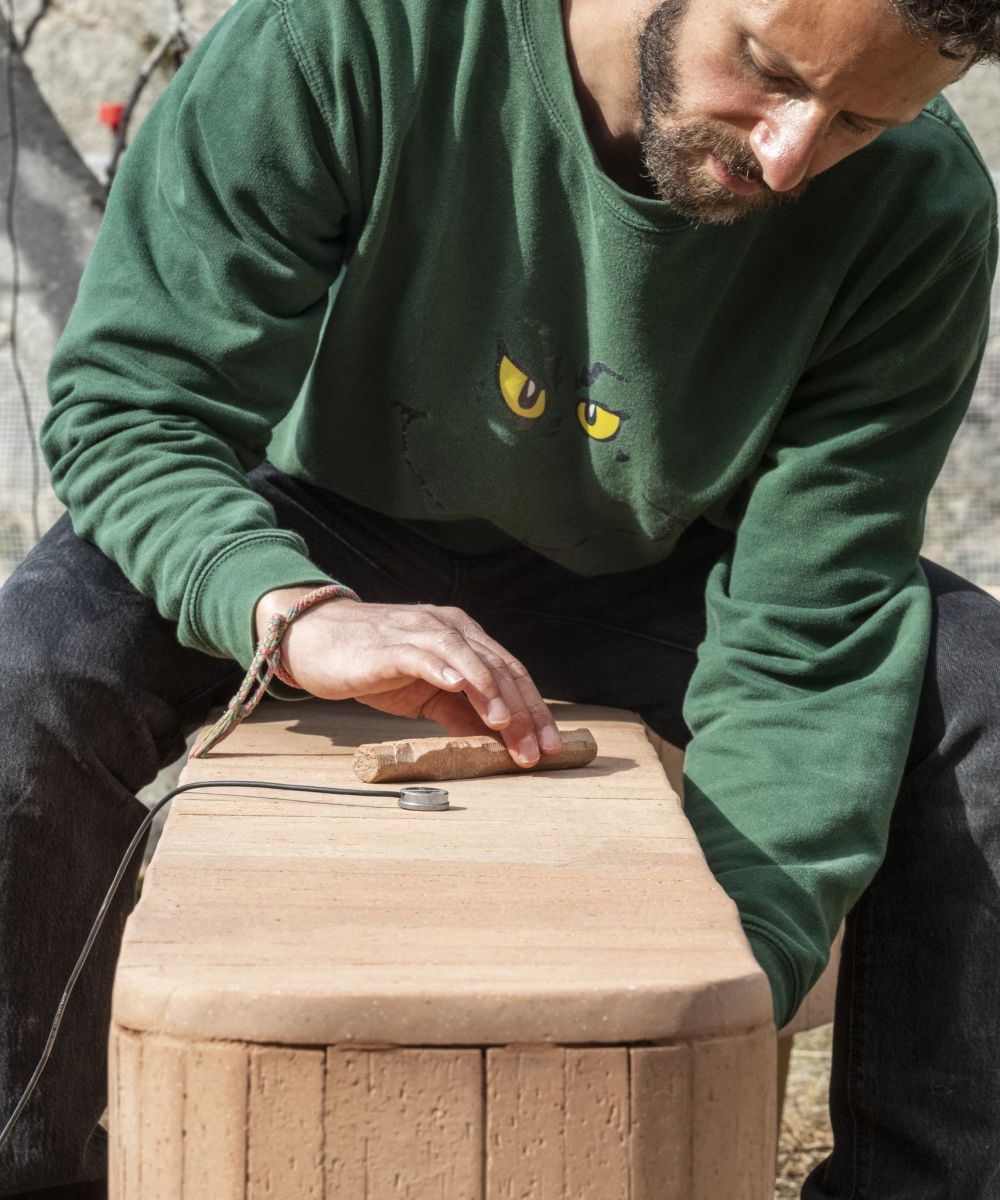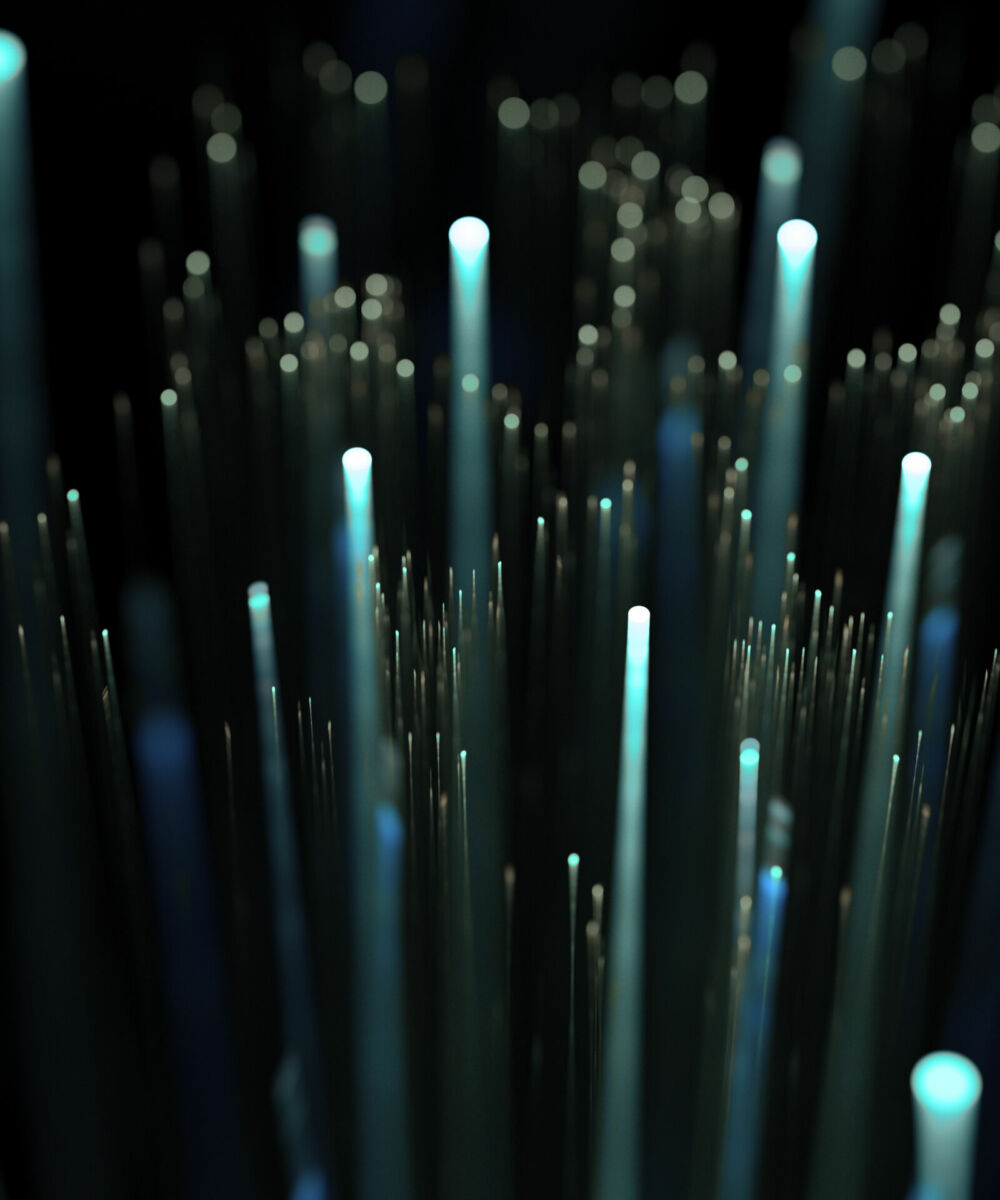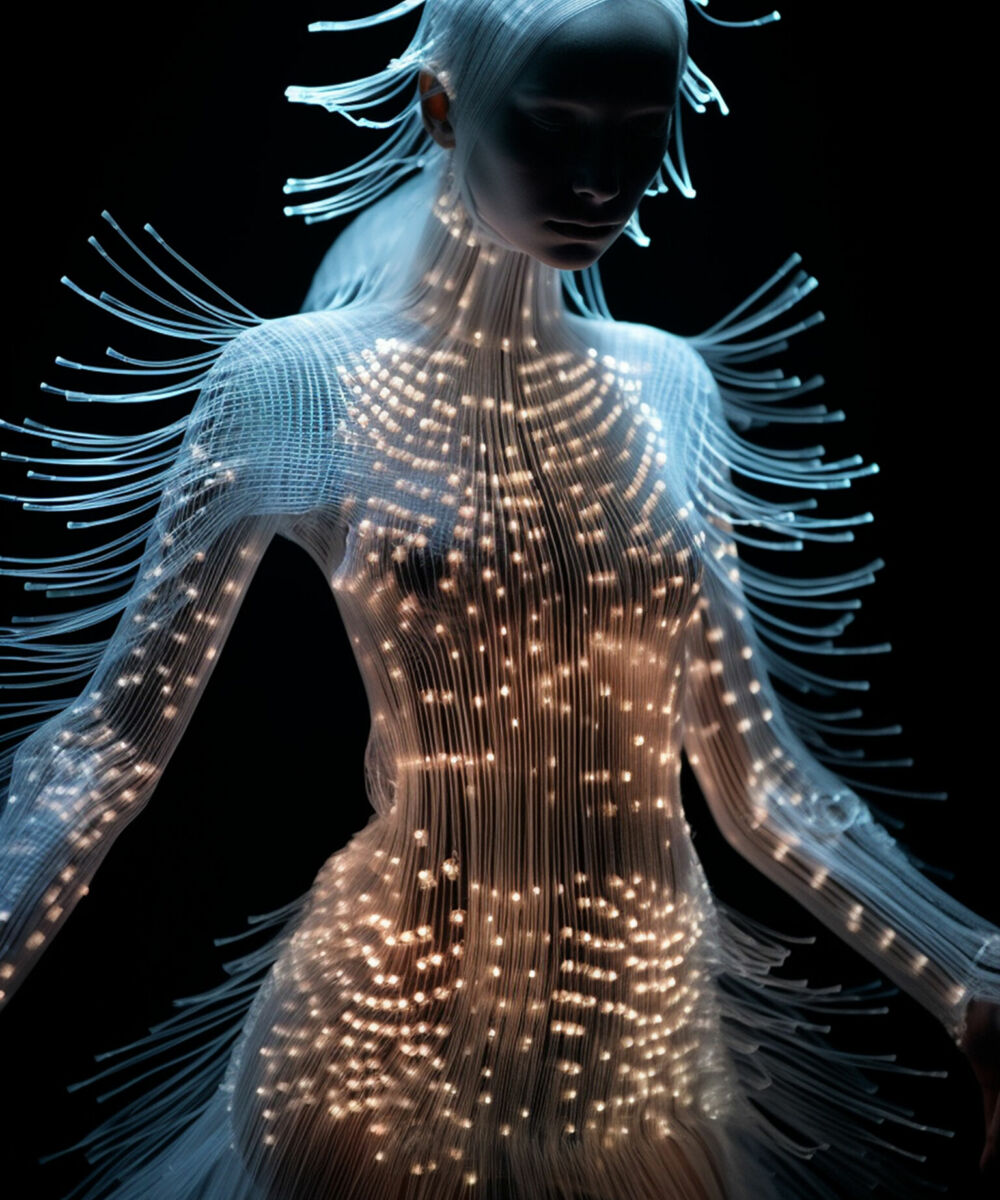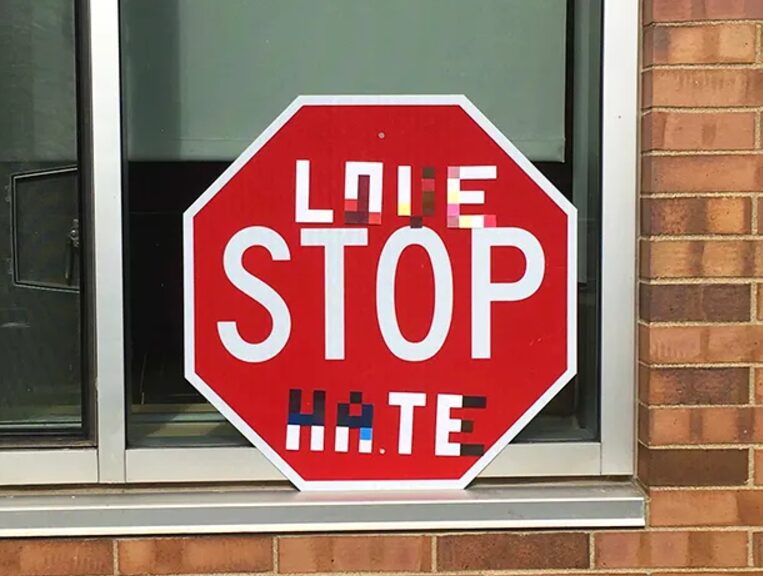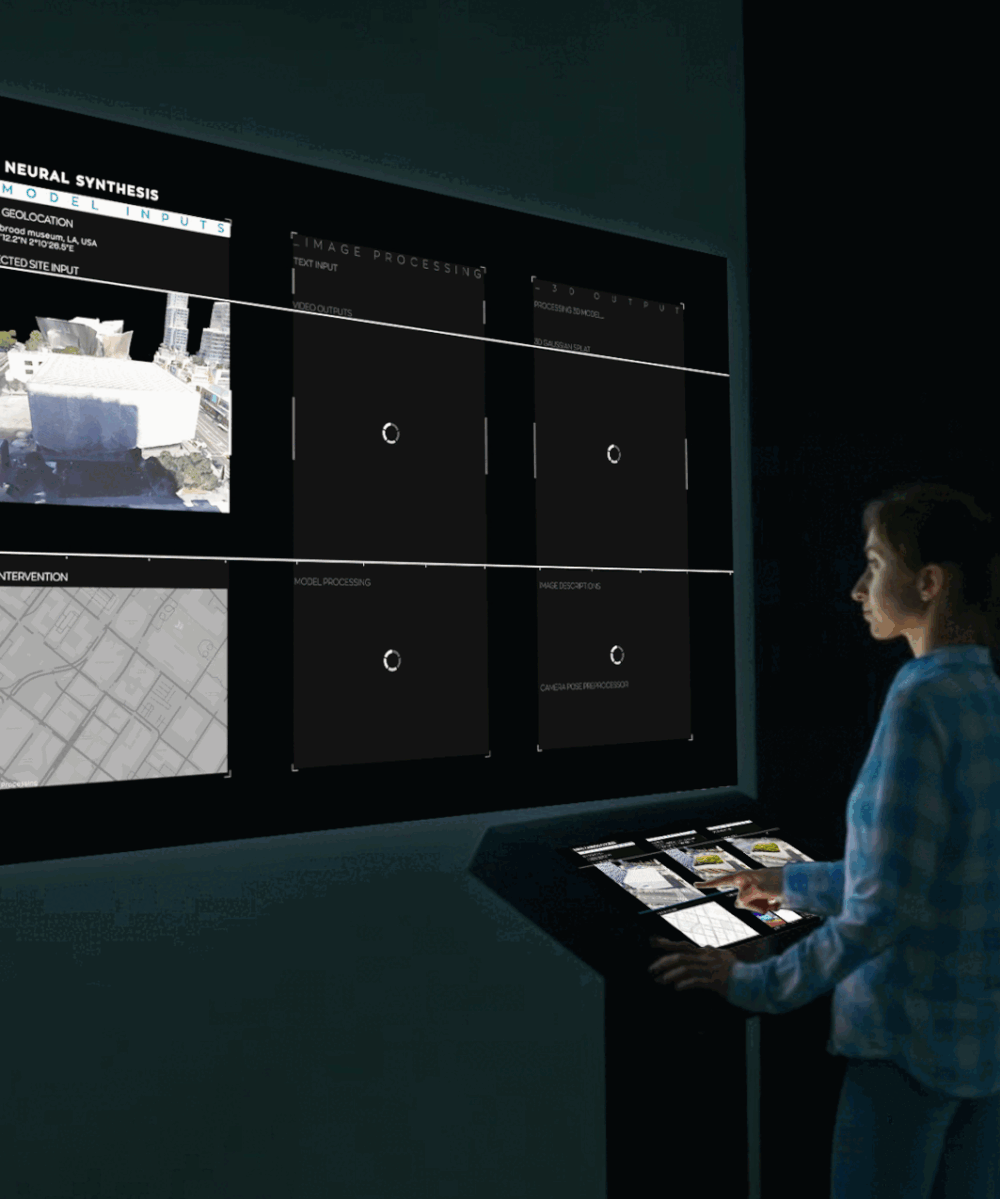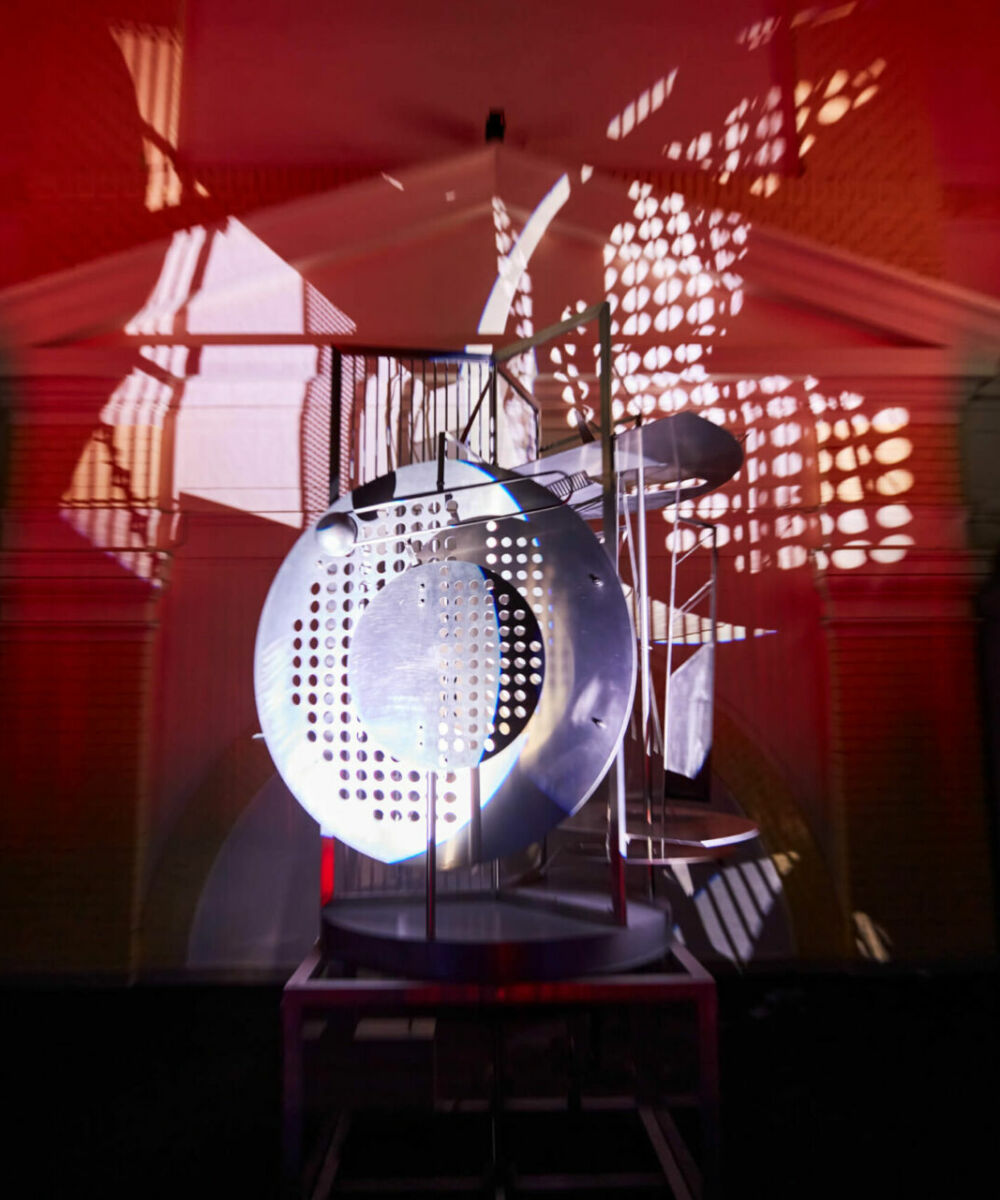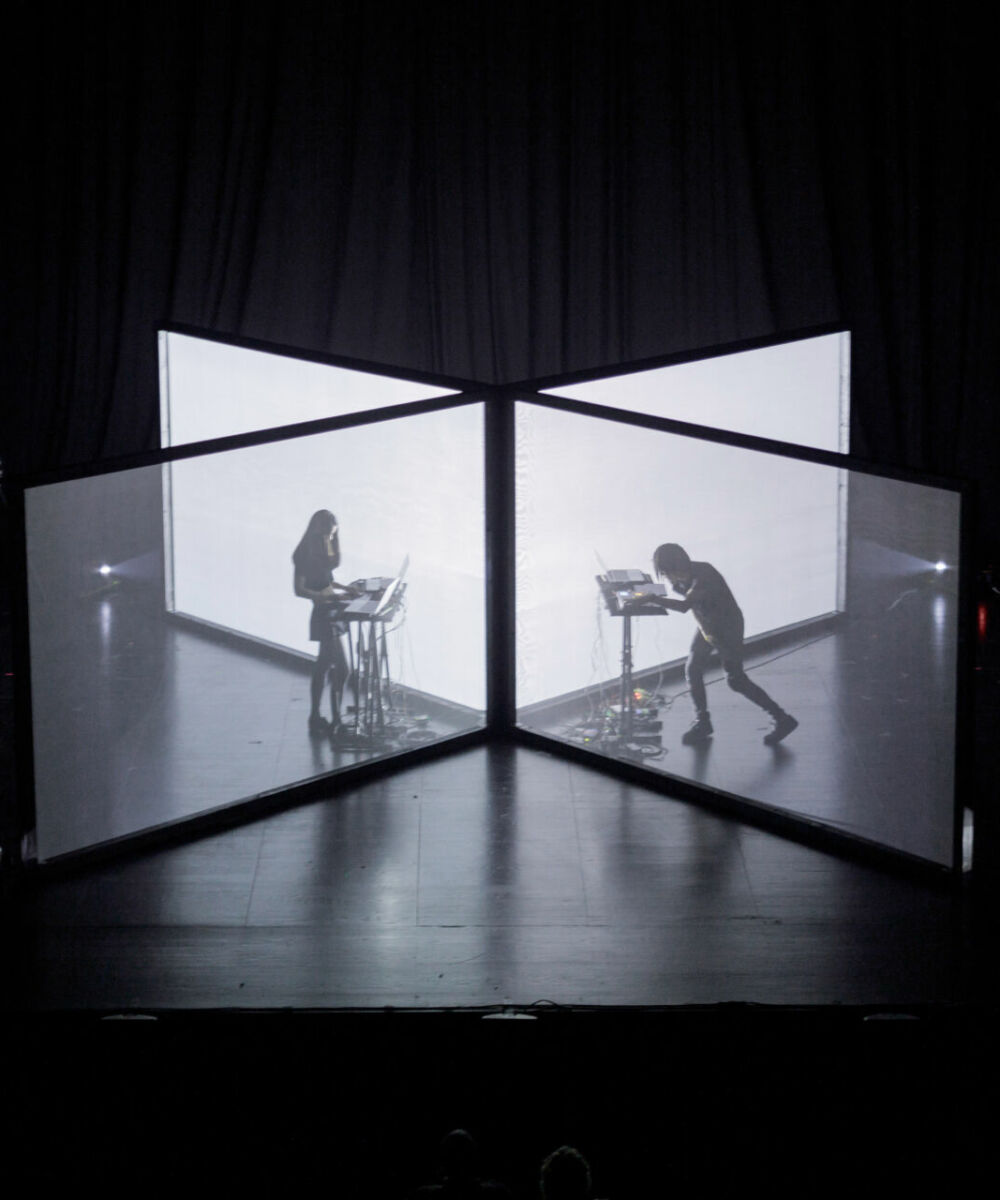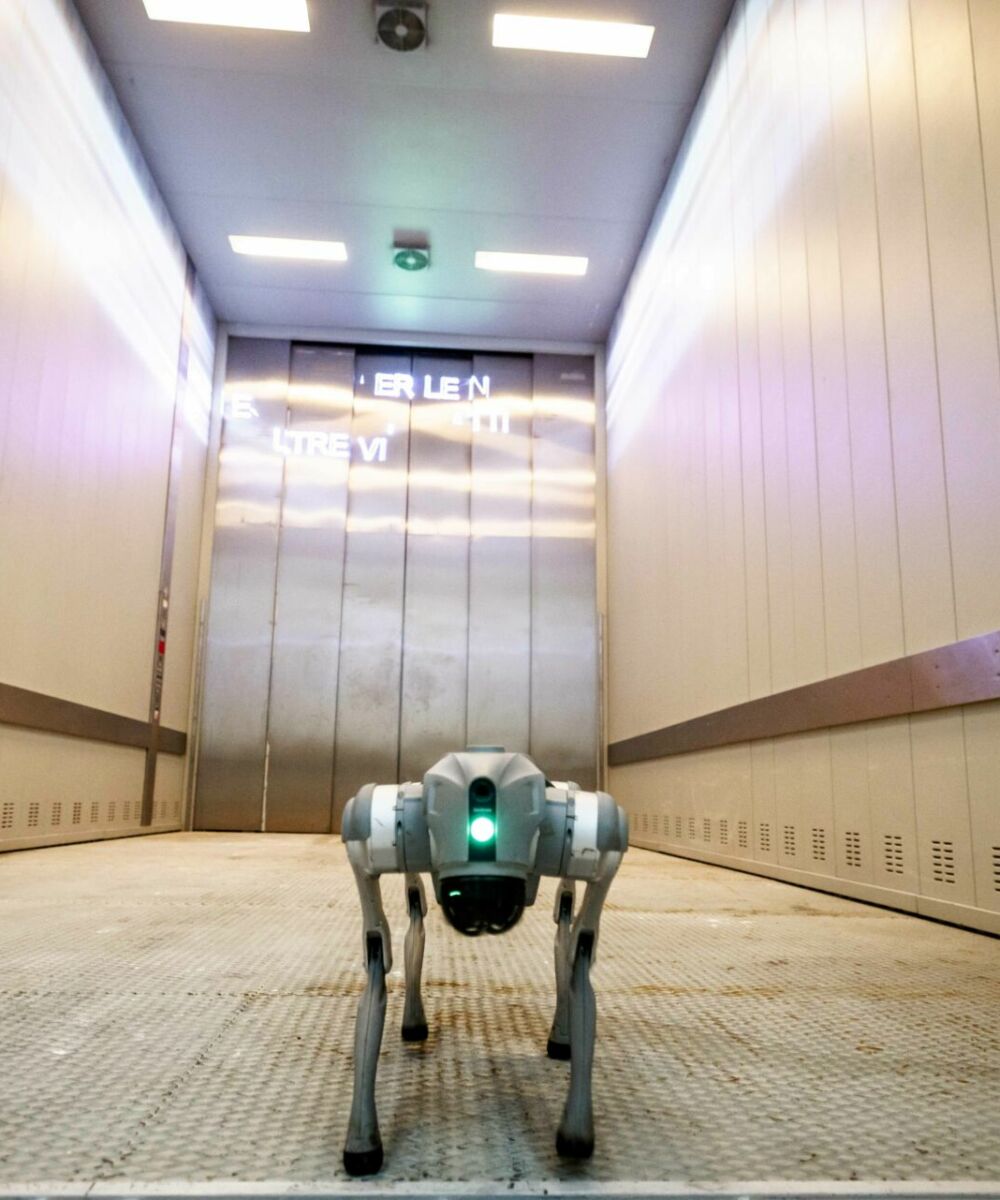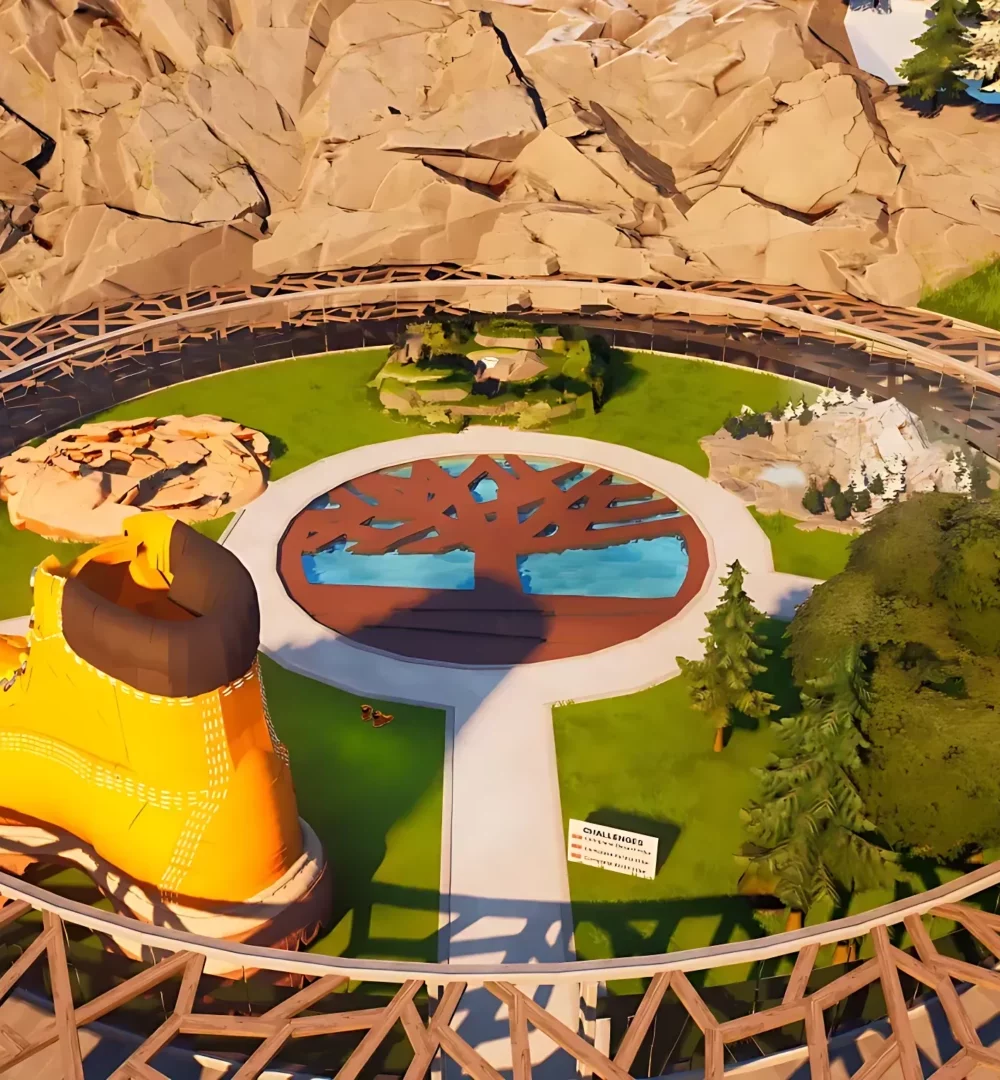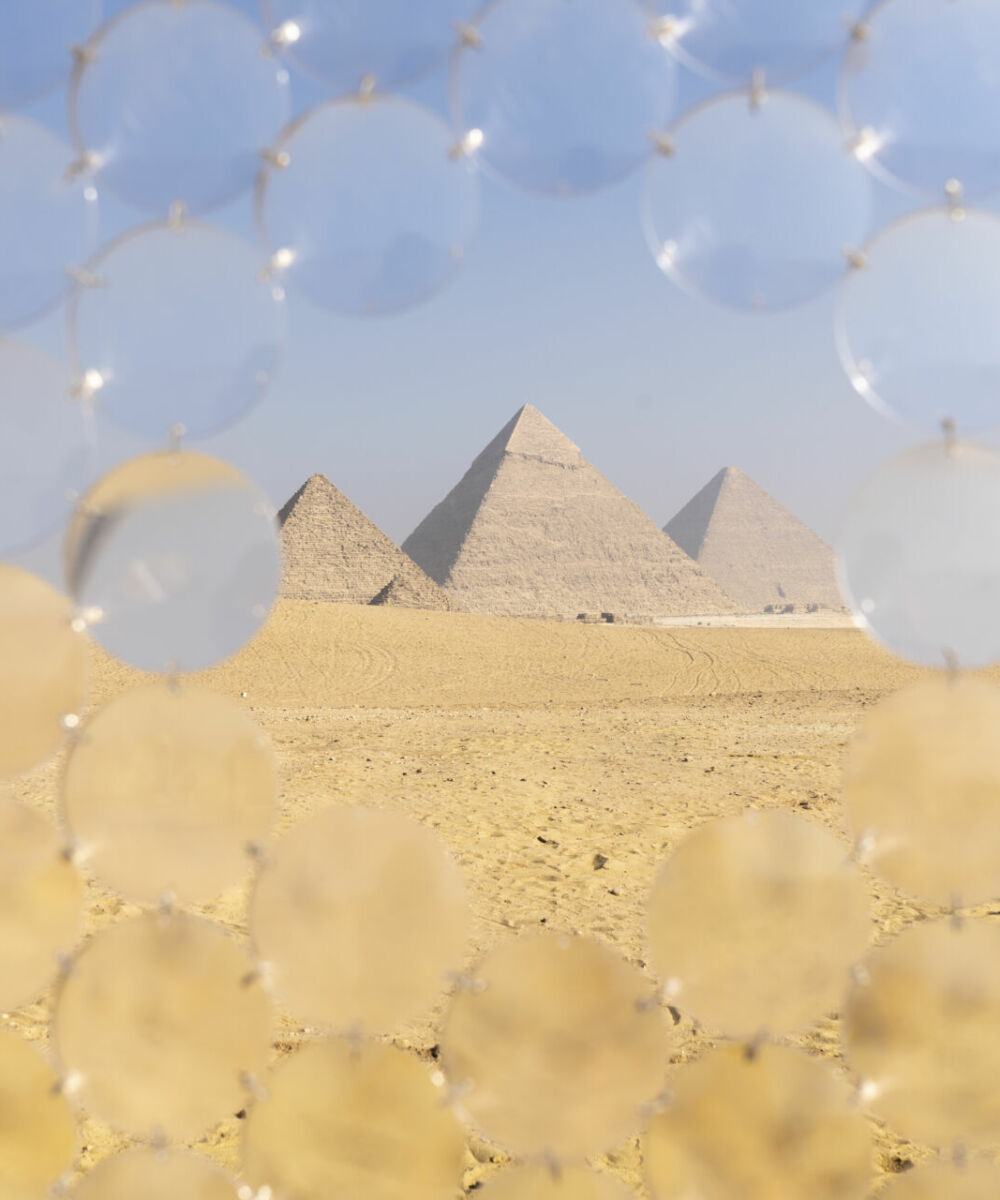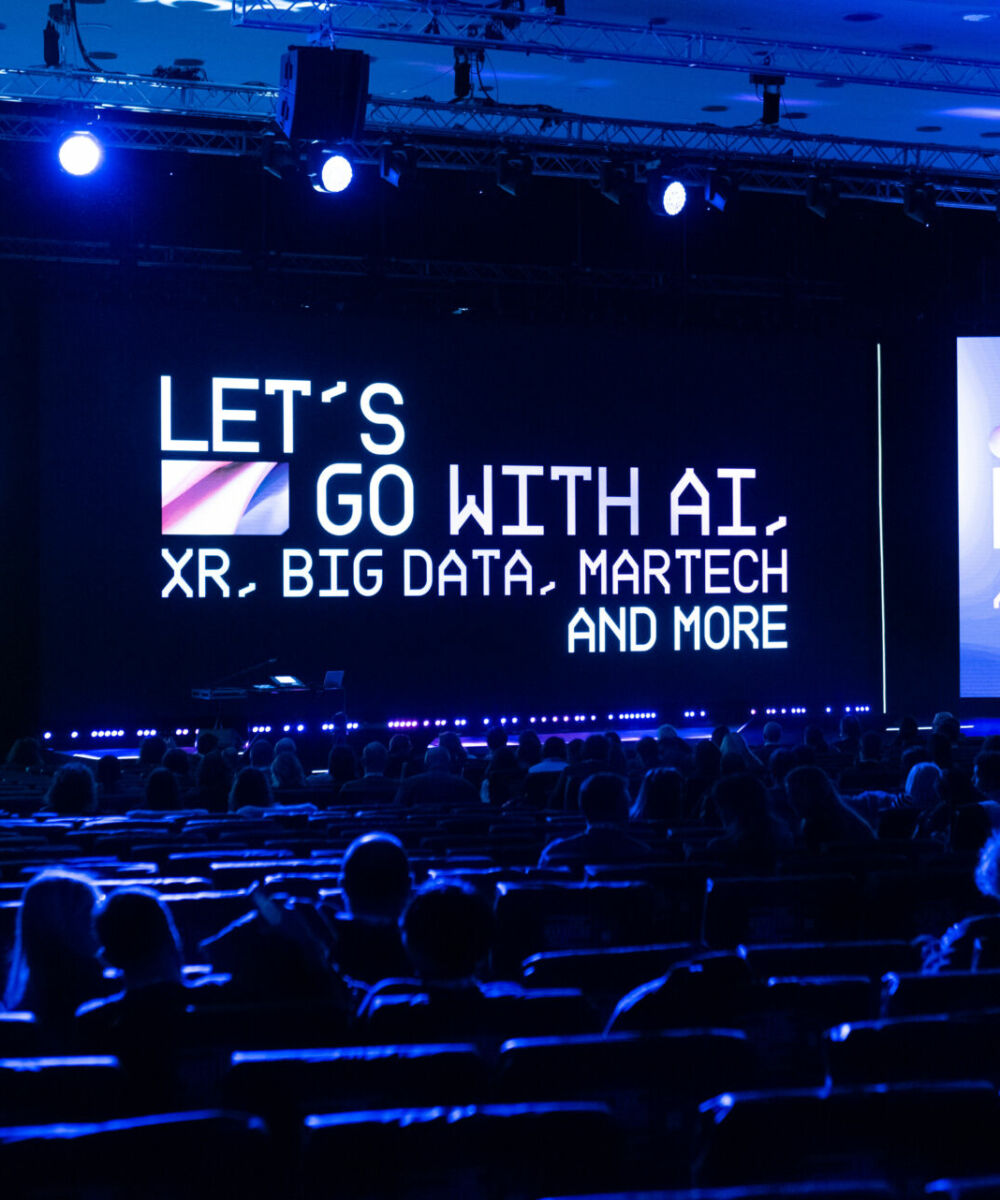Expanding the architecture of possibility
by Fabio Gnassi
The expansion of design possibilities in architecture passes through an expansion of knowledge of reality. In this scenario, artificial intelligence, with its dual exploratory and generative nature, asserts itself as a tool capable of shaping new forms and nurturing new knowledge. But, as happens every time one enters unexplored territories, each step forward requires a firm consolidation of the newly conquered space. However invisible and intangible, the same process is occurring with AI. The creation of new scenarios imposes the need to redefine ethical frameworks, which are essential to guide future choices and establish criteria by which to measure the quality of new processes.
Ila Colombo is an award-winning AI collaborator, artist, and creative director with over a decade of experience in the avant-garde world of Design, Art, Architecture, and Technology. Her unique perspective combines spatial computing, 3D-printing, design-art installations, and conceptual works, pushing the boundaries of design innovation. With a passion for sustainable practices, algorithmic and biomorphic design, Ila has made her mark at the leading design studio of British designer Ross Lovegrove, offering design thinking, craft-tech development, and creative direction for projects related to commercial objects, speculative experimental works, AI iterations, brand partnerships, and international exhibitions. Her current research on both the practical and philosophical impacts of generative AI within the creative industries, involves aspects from multi-modal workflows, team training, students education and Ethical considerations. Ila Colombo is a co-founder of DEOND, a Dubai-based multidisciplinary AI, R&D & 3DPA practice, merging human-centric creativity with advanced computation and digital fabrication. Ila is a member of the RIBA and an appointed member of the Architecture Program Advisory Board at the American University in Dubai (AUD), and she recently contributed to the landmark report on ‘AI for Creative Industries’ by the Dubai Future Foundation and Centre for the Fourth Industrial Revolution highlighting fundamental principles, insights and guidelines for the technology.
Your work reveals a particular interest in artificial intelligence as a means of building a new relationship between nature and architecture. Could you tell us about this approach by citing some of the works you have done?
Yes, my research explores the transformative potential of artificial intelligence as a mediator between natural systems and architectural design, seeking to decode and harness the profound biological intelligence that surrounds us. This intersection represents not merely a technological advancement, but a fundamental shift in how we understand and translate nature’s inherent wisdom into built environments. At the core of my work lies the recognition that natural systems possess sophisticated communication networks and adaptive strategies that have evolved over millions of years. Through AI’s analytical capabilities, we can now decode these previously imperceptible patterns – from the subtle chemical dialogues between flora and fauna to the complex structural properties of organic materials. This technological lens allows us to witness and learn from nature’s intelligence at unprecedented scales and speeds.
There are a few key areas of interest: first, the application of machine learning to analyse interspecies communication patterns, revealing design principles that can inform more responsive and integrated architectural solutions. Second, the use of AI in materials science, where we can both understand existing natural materials at a deeper level and generate new bio-inspired compositions that combine performance with sustainability. However, this technological advancement comes with its own ecological considerations. The significant computational resources required for AI systems – particularly in terms of water consumption for cooling and energy demands – present a paradox that demands our attention. Interestingly, I believe this challenge itself presents an opportunity: by directing AI’s problem-solving capabilities toward optimising its own environmental impact, we can work toward more sustainable computational approaches.
You recently participated in the development of the report ‘Artificial Intelligence in Creative Industries’, produced by the Dubai Future Foundation, which outlines guidelines for the development, regulation and use of artificial intelligence. What implications do you see in these guidelines for the future of the creative industries and our relationship with technology?
My contribution to the Dubai Future Foundation’s report on “Artificial Intelligence in Creative Industries” represents a critical moment in our collective dialogue about the future of creative practice. The Foundation’s pioneering work stands out in a landscape where few institutions are engaging with the profound implications of generative AI at such a foundational level. Their commitment to fostering substantive discourse around these transformative technologies creates an essential framework for understanding and shaping the evolution of creative industries. The unprecedented velocity of AI advancement places us at a fascinating inflection point where the very nature of creative practice is being redefined. While we cannot precisely predict the contours of creative careers even five years hence, our present analysis of emerging patterns and challenges enables us to develop thoughtful interventions and guidance for future practitioners.
Through this lens, the report serves not merely as a set of guidelines, but as a living document that acknowledges the dynamic relationship between human creativity and technological augmentation. One of the most compelling challenges emerging from my research and observations is what I term “algorithmic passivity” – a subtle but significant shift in creative engagement patterns at both educational and professional levels. In our content-saturated ecosystem, the seductive efficiency of AI-generated solutions can lead to a form of creative abbreviated thinking, where practitioners may default to “good enough” generations rather than engaging in the deep, iterative exploration that characterises truly innovative work. This tendency manifests across disciplines, from written discourse to architectural conceptualisation, potentially diminishing the rich complexity of human creative expression.
The emergence of a post-scarcity creative economy, where generative capabilities approach zero marginal cost, presents both extraordinary opportunities and profound challenges. The real concern isn’t the democratisation of creative tools, but rather the potential atrophy of what makes human creativity uniquely valuable – our capacity for nuanced interpretation, emotional resonance, and contextual understanding. This is why I advocate for what I call “cultivated uniqueness” – a practice that embraces technological advancement while maintaining unwavering commitment to deep human engagement and meaning-making.
The path forward, I believe, lies in developing what might be termed “hybrid creativity” – an approach that synthesises human intuition with AI capabilities through thoughtful, multi-modal workflows. This framework encourages practitioners to leverage AI not as a replacement for human creativity, but as an extension of our cognitive capabilities, enabling deeper exploration and more nuanced articulation of creative vision.
In collaboration with the Deond studio, which you founded, you participated in the design of an installation for Dubai Design Week. Could you tell us about this project and how artificial intelligence was used in the creative and design process?
The H.U.G. installation for Dubai Design Week represents a fascinating convergence of human intuition and technological augmentation, where the boundaries between organic and digital design processes become deliberately fluid. The project’s conception emerged from purely human creative ideation for its architectural framework, demonstrating the enduring value of traditional design thinking in shaping spatial experiences. Where artificial intelligence entered the creative process was in the visualisation and conceptual exploration of the installation’s internal narrative – the Holistic Unified Garment. This speculative piece examines the evolving relationship between human biology and adaptive technology, envisioning a future where wearable systems transcend mere functionality to become semi-autonomous extensions of our biological selves.
The AI-assisted visualisation process allowed us to probe deeper into this conceptual territory, rendering tangible the abstract possibilities of bio-reactive materials and intelligent adaptive systems. This exploration reflects my broader artistic investigation into the synthesis of biological systems with human anatomy and emerging technologies. The work posits a future where the traditional boundaries between nature, technology, and human consciousness become increasingly permeable, suggesting new paradigms of environmental and bodily integration. The architectural pavilion itself emerged from a different kind of dialogue – one between computational design and material craft. By choosing cardboard, a fundamentally analog and planar material, we deliberately created a tension between digital complexity and material simplicity.
The parametric design process pushed against the material’s inherent constraints, creating an interesting dialectic between computational possibility and physical limitation. This tension ultimately resolved into what we aspire at DEOND “ultimate digital craft” – where human handiwork, guided by computational frameworks, transforms basic materials into complex, nature-inspired forms. The result was an unexpected synthesis of digital and analog processes, where the final form referenced natural structures while maintaining its own unique architectural identity. This approach exemplifies what I believe is a crucial direction in contemporary design: the thoughtful integration of advanced computational methods with traditional craftsmanship, creating works that honour both technological innovation and human tactile intelligence.
In recent years, you have participated in numerous international conferences and exhibitions, engaging with experts in the field in different parts of the world. What is your view on the current state of the relationship between architecture and artificial intelligence? And what developments do you think could emerge in the near future in this field?
Through my engagement with global experts and practitioners across numerous international platforms, I’ve observed a fascinating evolution in the relationship between architecture and artificial intelligence – one that defies simple categorisation and instead reveals a rich tapestry of individualised approaches and methodologies. What emerges is not a monolithic adoption of technology, but rather a diverse ecosystem of personal frameworks and workflows, each reflecting unique interpretations of AI’s role in architectural practice.
This heterogeneity in implementation approaches represents a profound shift from traditional standardised methodologies. We’re witnessing the emergence of what might be termed “computational personalisation,” where practitioners develop highly individualised relationships with AI systems, crafting bespoke workflows that align with their specific design philosophies and project requirements. A significant trend materialising in the field centres on predictive and preventive applications, where AI serves as a powerful tool for scenario modelling and spatial optimisation. These systems extend beyond simple space planning to encompass sophisticated post-occupancy simulations, enabling a more nuanced understanding of how built environments evolve and perform over time.
However, I believe we’ve barely scratched the surface of AI’s potential, particularly in addressing architecture’s environmental impact. One of the most pressing opportunities lies in the application of AI to circular economy principles and waste management in construction. The stark reality that over 30% of building materials end up as waste, coupled with the sobering milestone reached in 2020 where anthropogenic mass surpassed global biomass, demands urgent technological intervention. AI could revolutionise our approach to material lifecycle management, waste prediction, and circular design principles. A fascinating dichotomy has emerged in the profession between what I term “digital-native architecture” – projects that exist primarily in the virtual realm – and “reality-augmented practice” where AI serves as a tool for addressing tangible environmental and social challenges. While there’s currently a significant focus on AI’s application for capital optimisation and ROI-driven space planning, I see this as a transitional phase. The emerging generation of architects appears poised to redirect these powerful tools toward more sustainable and socially conscious applications.
Looking toward the near future, I anticipate several key developments: First, the integration of AI with biometric and environmental data will likely enable more responsive and adaptable architecture. Second, we may see the emergence of “hybrid intelligence” systems that combine human intuition with machine learning to address complex urban challenges. Finally, I expect a shift toward what might be called “regenerative computation,” where AI tools are specifically designed to support and enhance ecological restoration through architecture. This evolution presents both extraordinary opportunities and profound responsibilities for our profession. The key lies not in wholesale adoption of technology, but in thoughtful integration that amplifies architecture’s capacity to address pressing global challenges while maintaining its fundamental role as a human-centred discipline.


